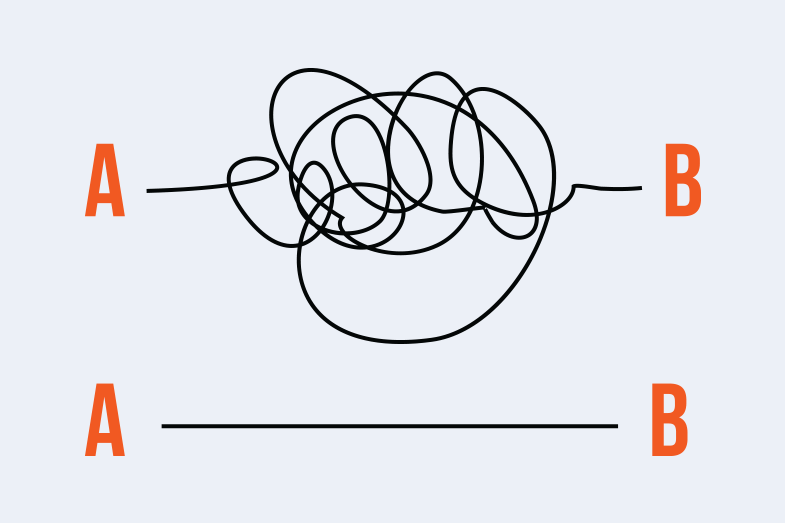
However, most companies fail to fully realize their brand’s value.
The good news is that getting into the driver’s seat is well within reach of any size company in any market, and it requires one thing: a well-conceived brand strategy.
Learn more about the high-value impact of leading with brand strategy
To understand brand strategy, you first need to understand what a brand and branding is.
Brand strategy is the plan for your brand that ensures your company reaches the point of alignment between your desired and actual brand perception, between customer expectations and the actual experience.
Simply put, your company’s brand strategy puts you in control of your brand and serves as the guiding force behind:
In other words, the brand strategy process and subsequent action plan provide all the information, directives and mandates needed for brand development, activation and management.
When well executed, a smart and effective brand strategy translates into higher visibility, credibility and trust; increased customer and employee loyalty; and, ultimately, higher brand value.
Now that you know what a brand strategy is, how do you go about developing the plan for taking control of your company’s brand?
Follow the guidelines below to develop an effective brand strategy and to successfully deploy it at your company.
Brand strategy is built on insight about your company’s unique strengths; its place among competitors; emerging markets and industry trends; and a deep understanding of its customers – who they are, how they perceive your company and what they think, feel, need and want.
This information is the backbone of your brand strategy because it provides a clear picture of the environment in which your company competes and enables you to tell a more compelling story of how your company is different.
Gathering information in the following areas will help you gain the clarity and insight you need:
Only with this high level of clarity can you begin to develop your brand strategy, starting with defining your brand.
Informed by insights gained from the information you’ve gathered, articulate your company’s brand by developing its brand platform.
A brand platform is a set of defining elements that, together, fully articulate your brand. Your company’s brand platform spells out its:
Next, you must translate the brand platform into marketing materials and touchpoints through which your audiences will experience the brand.
At this point your company’s brand strategy moves from conceptual to tangible – to something that engages your various audiences with your brand.
In short, your brand starts to take shape and establish presence in the world. The question is what will it do once it’s out there?
Brand strategy not only guides how you choose to define your brand.
It not only informs tactical tools that enable your audiences to experience your brand.
It also masterminds what you do next:
In total, brand strategy guides all the how’s, what’s, where’s and when’s of your marketing communications – internal and external.
Learn more about The High-Value Impact of Leading with Brand Strategy
Now, let’s be clear. Brand strategy is not a marketing plan. But a marketing plan must be led by your brand strategy. In fact, your marketing plan is really the tactical execution of your company’s brand strategy.
By prioritizing brand strategy, you’ll be making intentional decisions about your brand that such a high-value business asset deserves.
After all, a brand is your company’s reputation, and it is reputation on which today’s companies live or die – which makes investing in a thoughtful, well-conceived and effective brand strategy all the more worth the effort.
Building a strong brand is anything but easy. To assist you with the entire process – from conducting your brand audit through rebranding, we’ve developed this Brand Toolbox.
Download a free PDF of this article here.